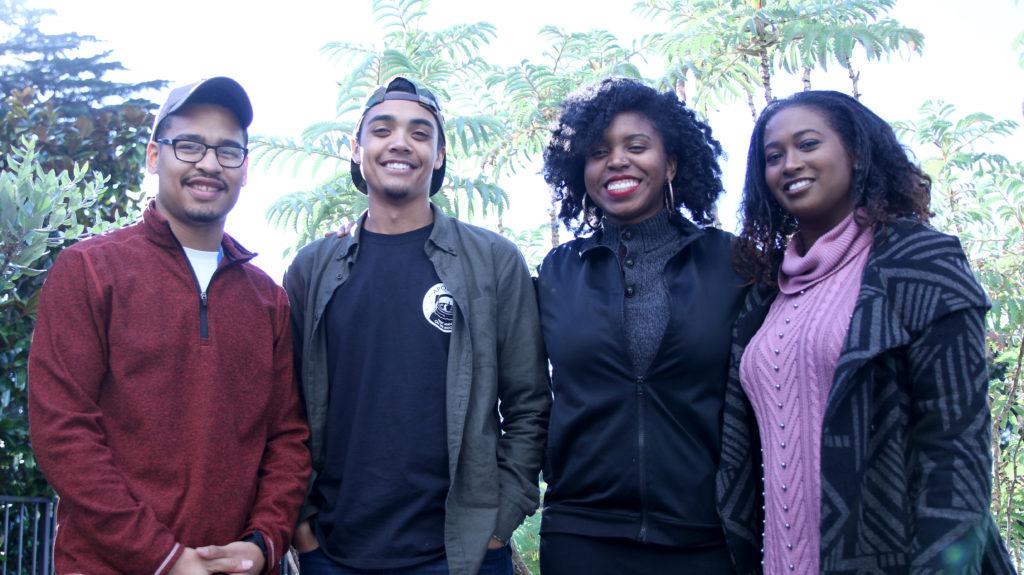*Revisions were made to this story on March 2 to correctly attribute Jasmine Sims for quotes regarding Katherine Johnson, and to clarify BE-STEM’s collective purpose.
History tends to be written by people with power, and for as long as the United States has existed, people who don’t identify as straight, white men have not had much of that power.
To start, the room was asked to name five black scientists. When met with an admittedly awkward silence, President of SF State BE-STEM (Black Excellence in Science, Technology, Engineering and Math) Wayne Swinson expanded the prompt to just five scientists during the Feb. 13 meeting in Hensel Hall.
“Science is not above society,” said Dr. Blake Riggs, an associate professor of cell and molecular biology at SF State.
“Many of the scientists we know are … functions of racism in society. “Hidden Figures” is a good example, we never heard about that story until recently,” he said. “If you ask anybody they probably only could name five scientists anyway, and they’d probably name the same five scientists.”
The point emphasized during this exercise by Swinson and the other BE-STEM members is that a true narrative is built when the overlooked contributors are given their proper credit.
“One of the great things that we as [a] group can share is, talk to you all about some black scientists that you probably haven’t known before, and discover somebody new,” Swinson said.
Swinson and other BE-STEM student members like Jasmine Sims, Alia Edington, Austin Murchison and Dwayne Evans sought to tell the story of some African American scientists and professors who haven’t received the praise they deserved for the astounding achievements they made. In many ways, their contributions had been whitewashed from our historical narrative of the natural science.
“I think we are aware that there’s not that many of us … but it can be a pretty sad tone,” Swinson said. “So what’s one way we can empower ourselves … to fill this gap of knowledge.”
BE-STEM members help educate non-members about African American scientists whose contributions have been overlooked or undervalued.
Each BE-STEM member sat around a table adorned with the name of an African American scientist and as participants migrated around the room, members would provide information on each scientist.
Ernest Everett Just was among the aforementioned scientists. Just was a biologist and educator whose work with egg fertilization pioneered some of the progress made with in vitro fertilization over the past two decades. After graduating magna cum laude from Dartmouth in 1901, Just worked in the field, focusing on invertebrate fertilization until becoming a professor and eventual department chair of zoology at Howard University in Washington D.C.
Katherine Johnson, the so-called human computer, was highlighted during the panel. Her contribution with space travel was showcased during the 2016 movie “Hidden Figures.” The influence of which was described by cell and molecular biology major Jasmine Sims.
“One of the really incredible things about her is that … NASA really depended on her to crunch the numbers and do these huge computational feats of things they just didn’t know,” Sims said.
“They (NASA) do acknowledge but now, and especially because the movie came out. Before that, it wasn’t really a known thing like [no one] really knew. As we had the discussion before, whether it’s a black scientist, black anything, a lot of times they’re not necessarily acknowledged,” Sims said, regarding Johnson’s previously overlooked success story.
Ruth Ella Moore was another scientist introduced during the educational event. Moore was the first African American woman to earn a Ph.D. in the natural sciences, in 1933. Her work with tuberculosis bacteria helped her secure a job teaching first at Tennessee State then at Howard University where, in 1955, she became department chair of bacteriology.
Dr. Percy Julian, another scientist highlighted, laid the foundational work for modern hormonal study. He earned a bachelor’s degree from DePaul in 1920 and wanted to earn a doctorate in chemistry but, facing societal pressures, chose to be a chemistry instructor at Fisk University instead.
Despite being granted a fellowship for graduate school at Harvard in 1923, the offer was rescinded as administrators feared backlash from white students. Dr. Julian earned a fellowship to continue his graduate work at the University of Vienna, and earned his Ph.D. in 1931.
When he returned stateside, Dr. Julian was briefly the chair of the chemistry department at Howard before leaving academia for the private sector, where he stayed for the rest of his career. Dr. Julian did the majority of his work with estrogen and testosterone-rich natural plants, creating synthetics to treat early incidents of glaucoma .and setting up hormone studies for generations.
Swinson stated that one of his “lofty goals” is to create a course or textbook that would educate people about the accomplishments of African American scientists, engineers and mathematicians, as well of other people of color in those fields. “My mission is [to spotlight] black scientists, but it expands to other people of color,” Swinson said.
The next step for the members of BE-STEM is making sure that future African American trailblazers and contributors are given the tools to succeed and a network that properly credits them.
“Something I was thinking about doing is connecting undergraduate and graduate students with elementary and middle schools so that outreach is making the next step and bringing that generation up,” Swinson said. “If you have a mentor that looks like you, is from the same area as you, has the same kind of future goals that you do, you have a higher chance of doing those things.”








